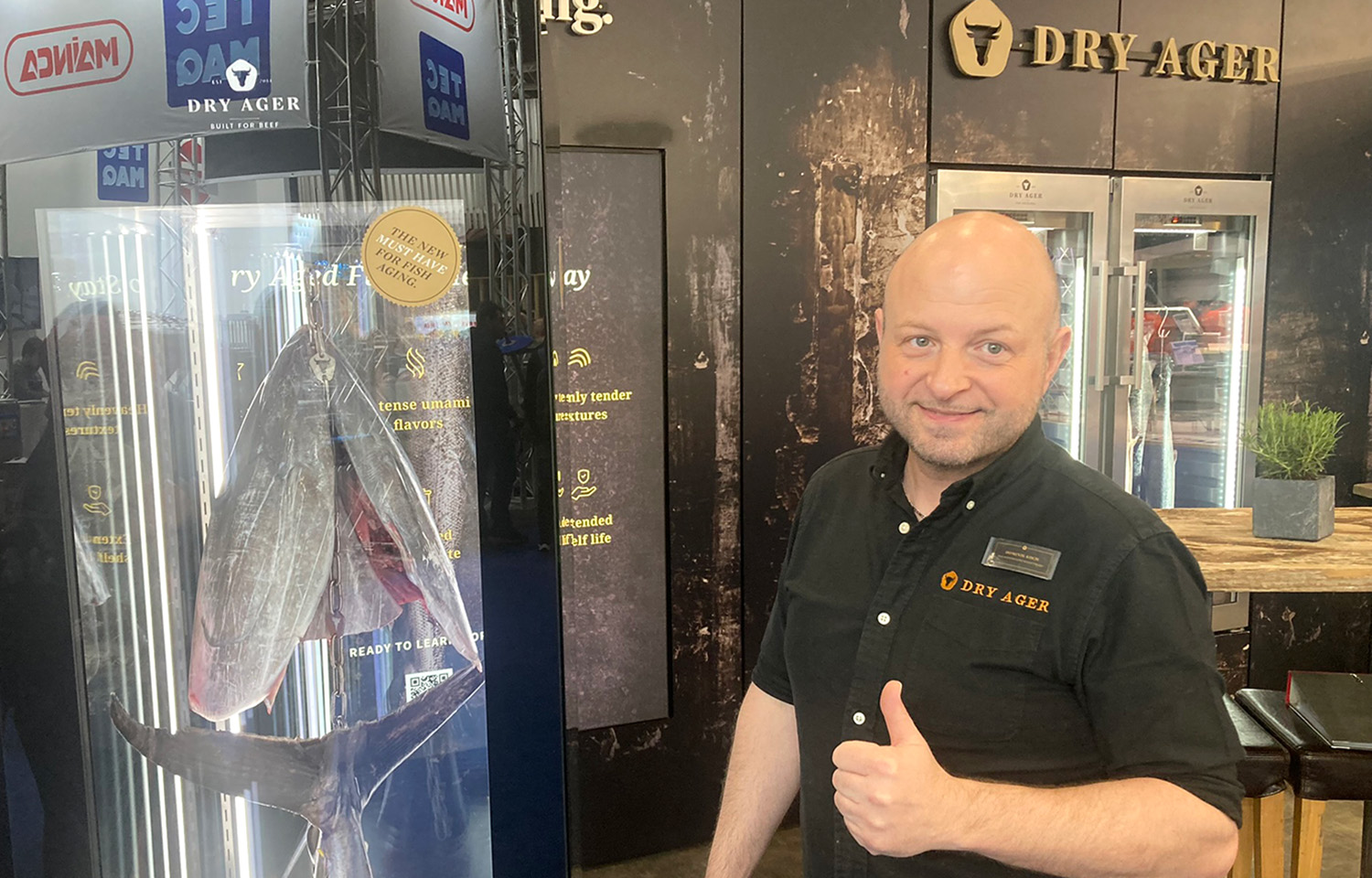Theodora, a trendy Mediterranean-style restaurant in Brooklyn, New York, U.S.A., sells a dry-aged whole branzino for USD 78 (EUR 72).
“It’s so tender; it slips right from the bones,” a server at the restaurant recently told Grub Street.
The restaurant also serves dry-aged Ora King salmon, striped bass, and rainbow trout, fetching a tidy premium for each.
At Il Totano, also in New York City, the best-seller is dry-aged kampachi in passionfruit broth, sold for USD 42 (EUR 39).
“It sounds like it makes no sense. People have been told their entire life, ‘You want to eat fish as fresh as possible,'” Il Totano Owner Harold Dieterle said. “When you dry-age, the flavors and the umami really develop.”
While nothing new – fish has been dry-aged for thousands of years in Asia – the trend picked up after Australian chef Josh Niland popularized the technique as a means of extending the life of seafood he purchased for his sustainability-themed restaurant.
“At many top restaurants in the world that serve fish, the best practice is, ‘Let’s buy another fish because yesterday’s isn’t as good as today’s is.’ That’s where a lot of fish is going in the [garbage] bin,” Niland told National Geographic. “But, if I know that a whiting is amazing for days one to seven, I’ve got ample opportunity to make sure 95 percent of that fish goes on the plate in an excellent condition. The only way we can do that is through dry handling.”
One of Niland’s signature dishes is a yellowfin tuna cheeseburger served with dry-aged tuna and swordfish bacon, and he’s had success with Spanish mackerel, mahi, and kingfish due to their high oil content.
“After five days, the fish firms up in its texture and the flavor makes your mouth water. We’re able to pair it with a vegetable we might not otherwise be able to one day one,” he said. “By dry-aging, it gives us a better definition of flavor in the fish and it really helps us prepare menus better.
At the forefront of this trend is Saulgau, Germany-based Dry Ager, a company established 40 years ago as a specialist in the cooling and drying of meat. In 2018, after hearing from its representatives and customers in Asia about demand for dry-aging seafood, the firm began experimenting with using its dry-aging boxes – which retail for between USD 5,695 (EUR 5,260) for a 44-pound capacity or USD 8,495 (EUR 7,850) for a 220-pound capacity – for use with fish.
Sales have picked up, especially to the foodservice sector, but also to “fish butcheries,” another rising trend, according to Dry-Ager “meat sommelier” Dominik Koch, who is also the company’s key account manager.
Koch said the global industry could benefit from seeing how well dry-aged seafood is now selling globally.
“Every seafood company that I speak to talks about value-added and trying to get more money for their product. I think this is a perfect solution,” Koch said. “This is a way you can upcharge menus, and you save on waste. it. Fish can be in the Dry-Ager for 10 days or two weeks, so you have no stress because you know if you don’t use it today, you can use it tomorrow.”
Dry-aged fish can be used for most food applications, from ...








